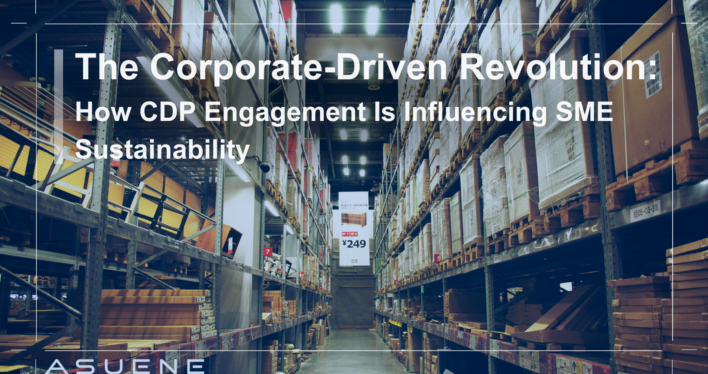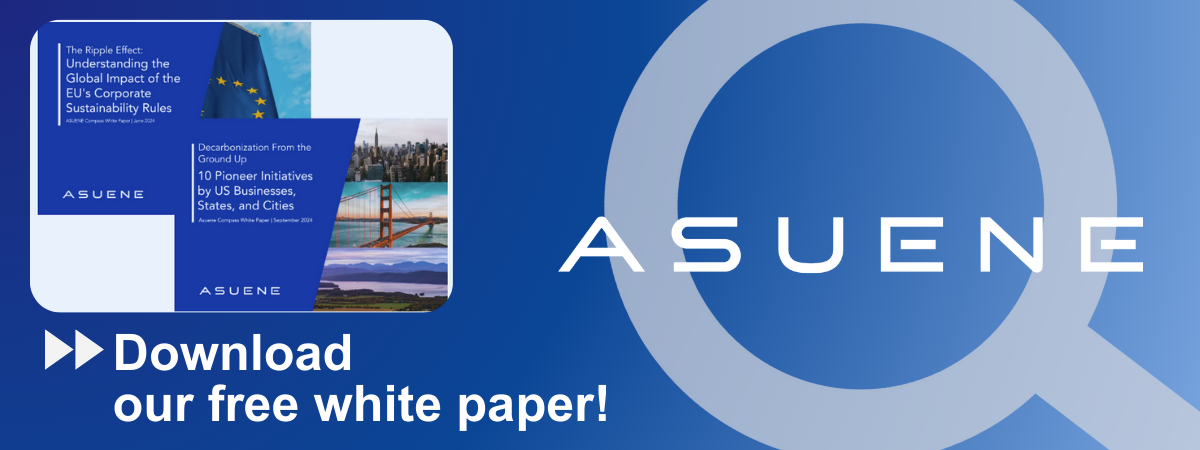- Article Summary
-
Overview: Why SMEs Are Now Central to Climate Action
As climate action moves from voluntary commitments to regulated mandates, small and medium-sized enterprises (SMEs) are finding themselves at the heart of global decarbonization efforts. While historically overlooked in climate policy discussions, SMEs today are key actors in the sustainability movement, primarily due to their position within corporate supply chains. Large enterprises, driven by Scope 3 emission reduction targets and CDP (formerly Carbon Disclosure Project) reporting, are now engaging their suppliers to disclose environmental data, set targets, and improve ESG performance.
In 2024 alone, more than 23,000 companies were asked to disclose through CDP’s supply chain platform. For most large corporations, supply chain emissions account for over 75% of their total carbon footprint. The message is clear: to meet climate goals, companies must engage the businesses that feed their operations. The vast majority of which are SMEs.
Investor pressure, changing regulations, and a growing emphasis on transparency are all accelerating this shift. For SMEs, this evolution represents both a challenge and an unprecedented opportunity to innovate, grow, and secure long-term competitiveness.
CDP Supplier Engagement Model: A Mechanism for Scalable ESG Accountability
CDP’s Supplier Engagement Assessment (SEA) has become a global benchmark for how effectively companies are cascading climate accountability across their value chains. Updated in 2025 to align more closely with regulatory trends such as the EU’s CSRD and the U.S. SEC Climate Disclosure Rule, the SEA evaluates corporates based on governance, targets, emissions data, and value chain engagement.
For purchasing companies, a high SEA score not only improves their own CDP performance but signals strong climate governance to stakeholders. More importantly, it motivates SME suppliers to begin measuring and disclosing their emissions. CDP provides structured questionnaires, guidance documents, and data quality frameworks to support this.
Large enterprises are increasingly integrating CDP’s engagement processes into supplier onboarding, RFPs, and contract renewals. In this way, ESG performance becomes not just a reporting requirement but a business differentiator.

Real-World Impact on SMEs: Compliance, Innovation, and Opportunity
The ripple effects of CDP supplier engagement are tangible. In the United States, manufacturers supplying to Walmart or Apple are now routinely expected to complete CDP disclosures and begin setting science-based targets. In Europe, SMEs that once considered ESG out of reach are now adopting CDP-aligned processes to maintain relationships with corporate buyers bound by CSRD.
SMEs report several benefits:
- Enhanced credibility and visibility
- Improved operational efficiency
- Access to green finance and innovation partnerships
However, the transition isn’t without challenges. Many SMEs lack the technical expertise or resources needed for full emissions accounting and target-setting.
Top 5 Challenges SMEs Report in CDP Engagement

Policy Drivers in the U.S. and Europe Fueling SME Disclosure
Timeline of SME-Relevant Climate Disclosures (2025–2030)
| Year | Event |
|---|---|
| 2025 | CSRD Phase-in for Large Enterprises |
| 2025 | CDP SEA Methodology 2025 Rollout |
| 2026 | CSRD Scope 3 Extension to SMEs (Indirect obligation via supply chain) |
| 2026 | SEC Climate Disclosure Rule Implementation (Scope 3 if material) |
| 2027 | CBAM Full Enforcement for Exporters to EU (carbon tracking required) |
| 2028 | CDP SEA 2028 Industry Benchmark Update (expected evolution in scoring) |
From 2025 onward, regulation is turbocharging the push for SME climate transparency:
- CSRD (EU): While SMEs are not directly obligated in early phases, large companies must report on value chain risks, indirectly mandating SME disclosure.
- SEC Climate Disclosure Rule (U.S.): Publicly listed companies must include Scope 3 emissions if material, compelling upstream and downstream engagement.
- CBAM (EU): SMEs exporting to Europe must now track and report carbon intensity, especially in aluminum, steel, and cement sectors.
- Green Public Procurement: ESG criteria increasingly embedded in government contracts in both U.S. and EU.
Conclusion: The New Ecosystem of Shared Accountability
SMEs are no longer on the periphery of climate action. Through CDP-driven engagement, they are becoming integral players in achieving global sustainability goals. While the journey requires new skills, systems, and cultural shifts, the rewards are significant: stronger partnerships, access to new markets, and long-term business resilience.
To fully realize this potential, large corporates must go beyond compliance demands. Investment in capacity-building, knowledge transfer, and digital tools will be essential. Governments and financial institutions must also step in to support SMEs with funding and infrastructure.
In the new ESG economy, shared accountability is the cornerstone of progress—and CDP is proving to be one of its most effective architects.
Why Work with ASUENE Inc.?
Asuene is a key player in carbon accounting, offering a comprehensive platform that measures, reduces, and reports emissions, including Scope 1-3. Asuene serves over 10,000 clients worldwide, providing an all-in-one solution that integrates GHG accounting, ESG supply chain management, a Carbon Credit exchange platform, and third-party verification.
ASUENE supports companies in achieving net-zero goals through advanced technology, consulting services, and an extensive network.


